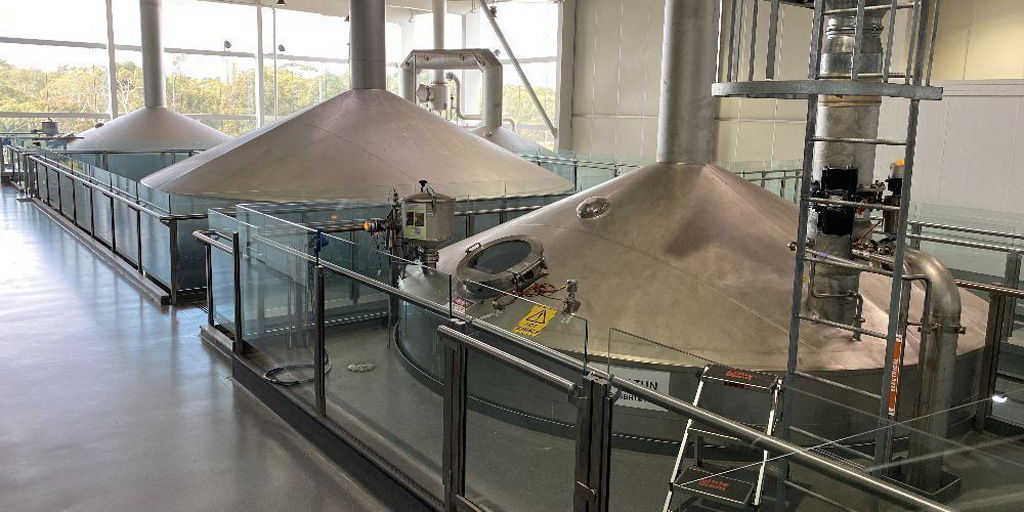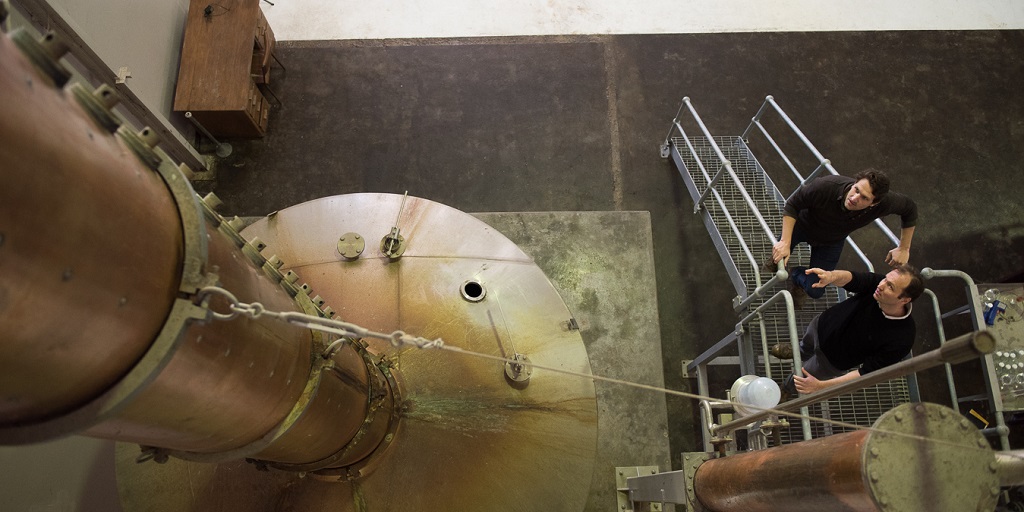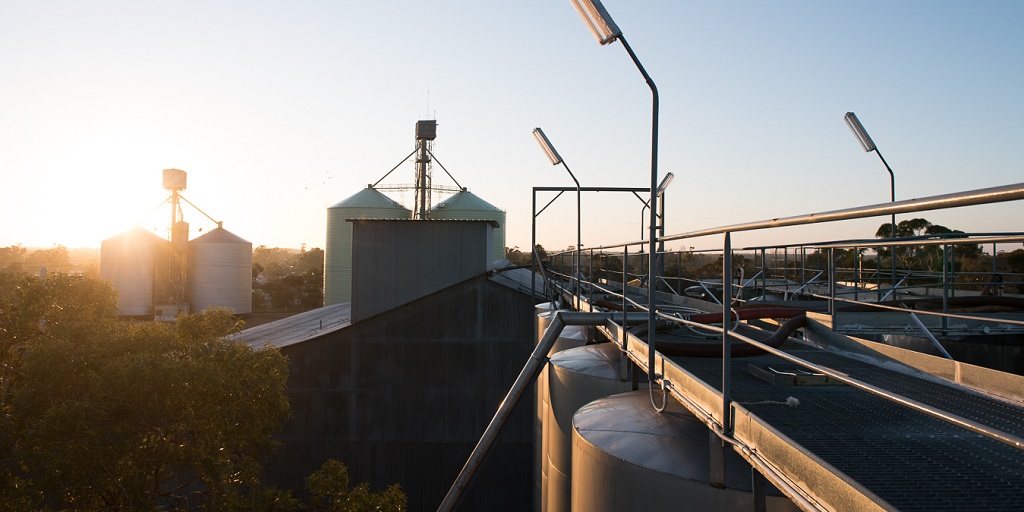
Whisky distillers acquire Lion’s West End brewhouse

Lion’s West End Brewhouse
Lion’s West End brewkit is going to a new home after Victoria’s Ostra Distillers acquired the equipment.
In 2020, Lion announced it would be closing its West End Brewery in South Australia and offloading its equipment, just five years after it invested $70 million in major upgrades to the brewery.
At its maximum capacity, the brewing kit can produce 120 million litres per annum according to its new owners, and includes a 500hL Steinecker Brewhouse.
“We got interested in buying a larger facility about three years ago,” explained Dawid Ostrowski, founder and CEO of Ostra Distillers.
“We have a large still, and we have large capacity, but we needed a larger brewhouse to continue growing.
“Lion were very receptive to us, and they were happy that the brew house was sold to us, because they’re not selling to a competitor or anything like that.
“And we don’t want to make beer, we have no interest in making beer, we’re in a small town in rural Victoria, and our focus is whisky, so naturally it’s a really good fit.”
With a few adjustments, the equipment will serve to produce wash for the distillery, and support the growth of the burgeoning craft spirit industry.
Brewers themselves have recognised the huge potential of craft spirits and adjusted their strategies accordingly.
Recently, Mighty Craft announced a whisky programme last year during a $5.9 million raise, while Black Hops introduced a new distillery brand, Pine Rivers, as part of its $2.2 million equity-crowdfunded growth plans and brewers like Young Henrys have been investing in their own distilling operations.

Ostra Distillery in Robinvale
The equipment
Many distillers acquire wash from existing beer breweries, but as craft distillers grow, they want to have greater control over the flavour profile of their wash, according to Ostrowski.
“It makes complete sense – brewers make the flavour. Distillers only keep the flavour they want that brewers have produced,” he said.
“Because of the cost of production, most distillers don’t brew, but that is changing. Distillers are becoming brewers because they want to control the flavour they are producing, and brewers which have been making the flavour will whack in a still and have a go.
“That collaboration is healthy, it’s exciting. Brewers for the past how long have been playing with malt blends and that rich history of innovation is being carried into distillation. It will create flavours we can sell to the world.”
But as craft distilling flourishes, it puts pressure on the industry to create the volumes that only major producers can currently manage. It also puts pressure on the brewing industry, as distillers begin to look for brewers to join their operations when there is already a skills shortage.
“Some make it in-house but it’s another industry to build within your distillery the cost is prohibitive, a lot buy their wash in. Commercial brewers like those in Tasmania do a big brew and then sell it out to people.
“[At Ostra] we don’t buy wash, I couldn’t even buy it, because we’re in the middle of nowhere, it’s not realistic for us to ever ship it in.
“So for us, it was innovate or die.”

Ostra Distillery
Ostra was located at its current location in Robinvale, Victoria, after Ostrowski acquired a former sherry-making site, which included a still.
“The place is immense, so we focused on contract production as a result.
“We supported a lot of the industry, and we’re happy to, we have no qualms about it, it has helped pay the mortgage and get us where we are today,” he explained.
“We don’t have brands but we’re in a cash position where we can lay down whisky and we’re looking at launching brands.”
The brewery they built at Robinvale was, much like many new breweries, a bit of a DIY job.
“I glued this brewhouse together, it was made to keep going but it will eventually fall apart.
“It was a continuous cook system, the mill never turns off and at max capacity we were churning out 100hL an hour – you have to keep it in context, I need 10 times more volume to make a bottle. If i was a brewer, it definitely wouldn’t be 100 hec an hour.”
“You walk into these craft breweries now and they’re all polished and beautiful – this was totally handmade.
“So we wanted to find something professional, get our yields up, hone the brewing skills to focus on flavour profile, yeasts, malts and temperatures and get profitability higher and higher.
“We really wanted to hit at least 10 million litres of pure alcohol a year, because we see the market really expanding for Australian whisky, we think it will go gangbusters and I’m betting the farm on it. Japanese whisky is in at the moment, and so is Irish whisky, but I think Australia has an opportunity to sell the brand internationally.
“But we can’t do it until we can build volumes to get bottles in front of people globally. We need the opportunity to create that volume, otherwise we won’t get those big distributors pushing Australian whisky globally.”
This is where Lion’s equipment came in, but it will require some adjustments when it is installed and commissioned.
“We didn’t need to buy the whole brewhouse, we didn’t need whirlpool or hop addition equipment which I know is sacrilege to brewers, but we left those assets behind which got the price down.
“We’ll have to change some of the equipment around, the vessel will have to make minor changes, but now we’ll be able to play with different recipes and flavour profiles on site.
“It also adds another level of professionalism. The brewhouse has 22 computers, it blows my mind. We have one at the minute running the still. This is like launching to Mars, it’s beyond comprehension for us.”
The whisky market
Craft distilling is following a similar trajectory of craft beer, but now, with its own industry organisation, the Australian Distillers Association, and a growing presence in the market, it is beginning to emerge into the mainstream consciousness.
“18 years ago there was no craft scene,” explained Ostrowski. “It was hard to sell stock into bars, everyone laughed at us, they asked, ‘where did you make this, in the bathtub?’ If you said that now, you could charge $300 a bottle!
“But [Ostra Distillers] are still a small family business. We’re not a multinational, the distilling industry is growing and it’s starting to get corporatised, but it’s similar to the brewing game, most are really small.
“When I drove up to Robinvale for the first time to see the site 16 years ago, I drove up in my Mitsubishi Gala, I was 26 years old and I grew a beard so I looked older. It was a hustle!
“The only reason we got the site back then was because we bought it during the grape glut, back then there was too much wine on the market, everyone trying to sell off those assets, no one was willing to buy. But the distilling sector hadn’t started off then.”
But the future looks bright for Australian distilling, Ostrowski said.
“Now, the market is growing at phenomenal rates and as soon as the market gets volume it will spark.
“Human behaviour is you dont drink what your parents drink. The next generation always drinks the next thing that’s cool – it’s all about craft now, and the previous generation it wasn’t.
“It’s been tough at times like any business but the future is bright. It will turn heads globally. Australia is actually on their way to be a global player, so let’s get Australia behind us and get them on the journey with us.”



